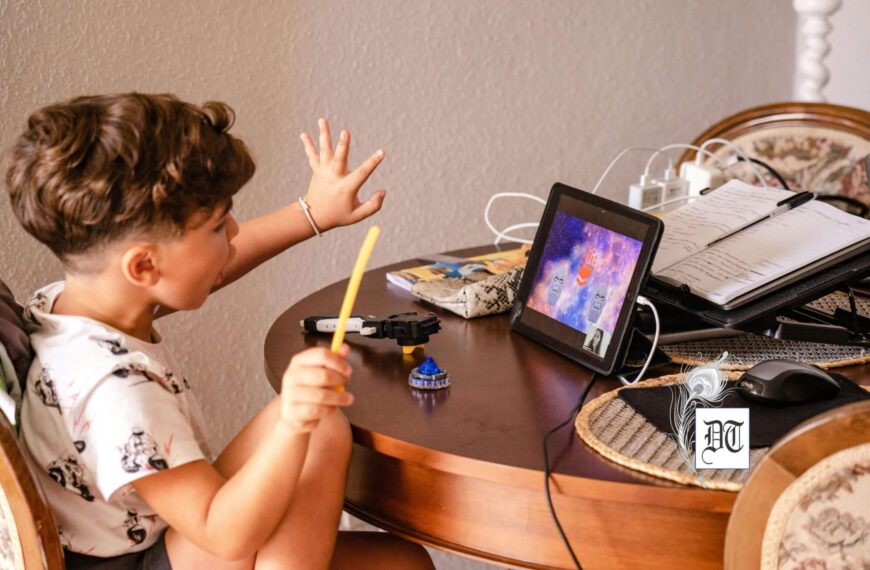Visual impairment is fairly common in autistic children. Others too might have visual impairment. Sarika, a UK-based special needs teacher, gives us useful tips to help such children in schools.
“The most beautiful things in the world cannot be seen or even touched that must be felt with the heart” ~ Helen Keller
Visual impairment is a permanent and significant degree of sight loss, which cannot be fully corrected using glasses or contact lenses.
Around 2.5% of population in the UK is visually impaired. That is, out of approximately 1.5 million people in the UK, around 150,000 are blind.
It is estimated that around 25,000 children and young people in England and Wales have a sight impairment that requires specialist education support. Of there more than 60% are educated in mainstream schools, where their requirements might not be easy to address.
According to Royal National Institute of Blind People severe visual impairment or blindness can substantially delay early childhood development and learning. Even a moderate visual impairment can have a notable impact.
Types of Visual Impairment (1)
Most of us are familiar with visual impairments such as near sightedness and far sightedness, less familiar visual impairment that include:
1. Strabismus, where the eyes look in different directions and do not focus simultaneously on a single point
2. Congenital cataracts, where the lens of the eye is cloudy.
3. Retinopathy of prematurity, which may occur in premature babies when the light sensitive retina hasn’t developed sufficiently before birth.
4. Retinitis pigmentosa, a rare inherited disease that slowly destroys the retina.
5. Coloboma, where a portion of the structure of the eye is missing.
6. Optic nerve hypoplasia, where is caused by underdeveloped fibers in the optic nerve and which affects depth perception, sensitivity to tight, and acuity of vision and
7. Cortical visual impairment (cvi), which is caused by damage to the part of the brain related to vision, not to the eyes.
Some of the common signs that a child may have a visual impairment include the following:
Eyes that don’t move together when following an object or a face
Crossed eyes, eyes that turn out in eyes that flutter from side to side or up and
Eyes that bulge, dance, or bounce in rapid rhythmic movements
Repeated shutting or covering of one eye
Unusual degree of clumsiness, such as frequent bumping into things or
Frequent squinting, blinking, eye rubbing or face crunching, especially when
Sitting too close to the TV or holding toys and books too close to the face
Avoiding tasks and activities that require tasks and activities that require good
Holding reading material very far away
Difficulties copying information from the board
Complaining of blurred or double print
Confusing letters of a similar shape
Tendency to miss out letters and words when writing
Large and / or unclear handwriting
Complaining of eyes hurting or itching
Poor body awareness and hand eye coordination
Supporting Blind and Visually Impaired Children in Schools The majority of visually impaired children are educated in mainstream schools. Most of them are visually impaired children. It is necessary to keep checking that specialist equipment and teaching strategies are effective.
Specialist Equipment
The individual needs of visually impaired children vary a great deal. Some children may use some specialist equipment to help them with tasks, such as reading and writing. Examples include:
- 1. Special lights and that can be hand held or standalone
- 2. Electronic magnifiers or CCTV system that can both magnify and enhance an image
- 3. Devices that can read the written text aloud
- 4. Laptops and computers with screen magnification software, screen reading software
- 5. Cassette recorder
- 6. Talking dictionaries
- 7. Large display or talking calculators and watches
- 8. Special stationary items such as large rulers protractors
- 9. Specialist physical education and games equipment:
- Separate play areas for ball games
- Size-3 football should be used
- For cricket also special ball should be used
- Pathways and edges must be clearly defined
- Vehicles well separated from pedestrians
- 10. Some children with severe visual impairments may learn to read Braille
Technical Support at School
Pupils use laptop or PC with standard application software and screen reader software. The technician and the local authorities may set up laptop with the following features to suit the pupils’ visual needs:
- Suitable display characteristics
- Special shortcut keys to enable the pupil to start programs quickly
- A file structure within the main document storage area for each subject studied
- Special shortcut keys, in the default template file for the word processor program to perform some of the most common tasks
Teaching Strategies
Teachers have a responsibility to ensure that all pupils may participate fully in their lessons and perform activities to the best of their ability. Some tips and strategies that can be useful when working visually impaired pupils include:
- Ensure working areas are well lit, and visually impaired children are seated
- Check visually impaired children are wearing their glasses
- Maintain a quiet atmosphere to improve listening conditions
- Use high quality written resources with good contrast and clear text in a
- Provide different or adopted resources where necessary, like enlarged
- Make use of specialist resources such as large print and talking books
- Present information in a variety of ways e.g. support texts and visual aids
- Provide resources electronically when needed
- Set variety of tasks, e.g. practical work, written work, role play activities,
- Allow pupils to present their works in different ways, e.g. electronically,
- Use teaching assistants as reading scribes and note takers if appropriate
Effective Partnership
It is mandatory that professionals working with visually impaired children work in an effective partnership with each other with the parents or carers of the child. This partnership hould include:
- Regular communication and information sharing
- Joint planning and evaluation
- Clear understanding of each other’s roles and responsibilities
This will help ensure that everyone is aware of the individual needs and progress of the child that consistent, effective teaching strategies are used.
A wide range of professionals may belong to a partnership, including teaching assistants, communication, support workers, teachers, a senco, a physiotherapist and occupational therapist.
(1) Source: Centre for Parent Information
Pix from Net







 By
By
 By
By
 By
By
 By
By